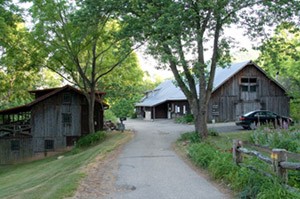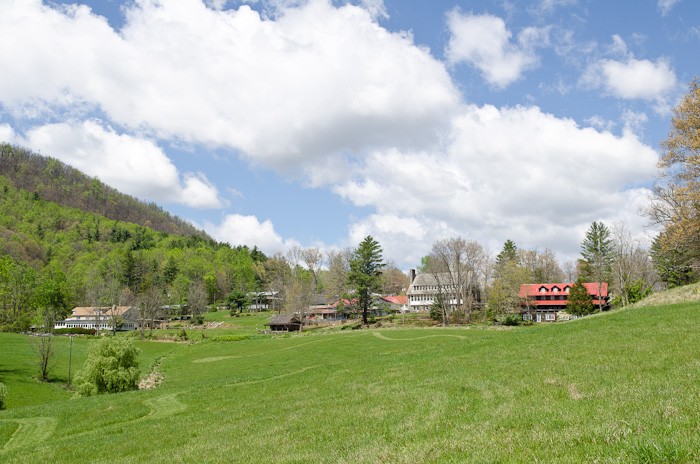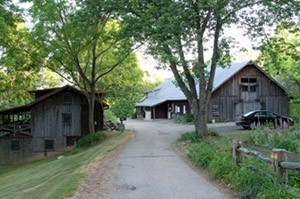The Penland School of Crafts
Introduction
Text-to-speech Audio
Founded in 1929 by Lucy Morgan, The Penland School was originally an outgrowth of a craft-based economic development project she had started several years earlier. When Morgan retired in 1962, she was succeeded by Bill Brown. Brown updated and expanded the school, added longer fall and spring sessions, and created resident artist programs at the school. Today, Penland encompasses about 400 acres and 51 buildings, and more than 1,200 people come each year seeking instruction.
Images
Barns at the Penland School

The Penland School


Backstory and Context
Text-to-speech Audio
Penland School of Crafts was started by Lucy Morgan, always known as Miss Lucy, who first came to Penland, North Carolina in 1920 as a teacher at the Appalachian School. In 1923, she spent three months at Berea College learning to weave. When she returned to Penland she began the Penland Weavers, a cottage industry that provided local women with looms and materials and then marketed their handwoven goods.
In 1928, she persuaded noted weaving expert Edward F. Worst to visit Penland and work with the weavers. When he returned in 1929, several out-of-state students joined a group of local women for a one-week class, and The Penland School was born. Within a few years, Morgan added other crafts and began to raise funds and construct buildings.
That jolt came in the person of Penland's second director, sculptor, and design teacher Bill Brown. Brown shared Morgan's devotion to experiential education, and he brought vision, new energy, and a network of connections to the emerging studio crafts movement. He put out a call for help and the artists who came to teach at Penland brought the school to new heights.
During his twenty-one-year tenure, Brown added new media, such as iron and glass, began offering eight-week sessions called Concentrations, expanded the work-study scholarship program, and started the core fellowship and resident artist programs. The core fellowship program gives nine artists an opportunity for two years of full-time study at Penland. The resident artist program, which provides three years of low-cost housing and studio space, has nurtured the careers of many significant craftspeople and also helped create a vibrant craft community near the school.
In recent years, Penland has expanded its range of media, improved the physical plant, established a gallery and a community education program, and continued to offer innovative classes. Students come to Penland from all around. Some see it as a productive retreat, some as a source of inspiration for their creative lives, and others as a network for the exchange of information. What brings them together is a love of materials and making, and the experience of working in a supportive community atmosphere.
Sources
http://www.northcarolinahistory.org/encyclopedia/699/entry http://penland.org/about/history.html
